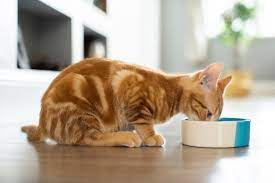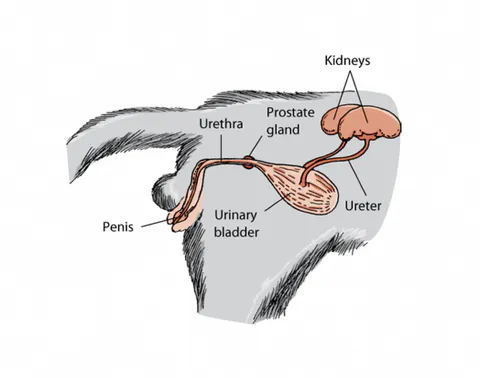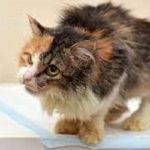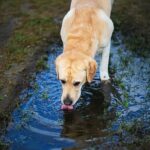
Cats more so than dogs are prone to kidney failure as they age. Often issues are noted after 10 years of age but in some cases are seen earlier – usually no younger than eight years unless there is a genetic pre-disposition.
Signs of kidney failure start as very mild. Pet owners may see increased drinking with no explanation. Your feline friend may also start urinating more.
The increased thirst occurs when the kidneys are unable to continue returning water to the body. The healthy kidney does not allow too much water (in normal conditions) to leave the blood stream and spill into the urine. The disease kidney is no longer able to pull the water back and so more water is lost when the individual urinates. the result is anything from mild to more significant dehydration, which in turn makes your cat drink more.

Cats with kidney failure are more predisposed to urinary tract infections as the dilute (extra water) in the bladder loses defense mechanisms for fighting off bacteria. females get UTIs more frequently than males who have a longer urethra – the inside ‘tube’ that runs from the bladder through the genitalia and to the outside. Shorter lengths means bacteria can more easily travel to the bladder. Male cats can still get infections but it’s easier for a female cat to get infections with compromised kidneys.
If vales of products excreted by the kidneys from the blood are still normal or relatively low and the main thing noted early on in the disease is dilute urine, the focus can be on increasing fluid intake. This can begin with adding circulating water fountains or anything that will encourage your cat to drink.
There is also a product by Purina called HydraCare that is somewhat water-y and tasty for most cats. they consume it and gain some water and this product promotes drinking.

As disease progresses over time, fluid losses increase and you cat may start having rising levels of products in his or her blood that the healthy kidneys normal remove. If the cat tolerates it, this is where you veterinarian can work with you and prescribe an human-grade hospital injectable fluid that can be given to your pet under the skin 2-3 times a week.
This isn’t regular fluid but a physiologic balanced pH fluid that comes in sterile liter bags. This can help replenish hydration and support the kidneys in removing waste from their systems.
Two common products that build up in an individual’s body with kidney failure are blood urea nitrogen (called BUN) and creatinine. BUN is the breakdown product of proteins. It’s acidic and if it gets high can lead to intestinal irritation and nausea.
Creatinine is a muscle breakdown by product. in emaciated and poorly muscled animals, it can be lower not because the kidneys are working well but because it reflects the overall muscle state of your pet.
As these values rise, it suggests disease progression. It is also a great time to work with your veterinarian and have him or her prescribe a kidney formulated diet. These diets have restricted protein, reduced phosphorous and increased potassium to address the imbalances that are expected to occur with kidney disease. By lowering the protein intake, the BUN can also be lower and result in less acidic products building up.
Things that happen as the kidneys fail are:
- Increased blood pressure (hypertension)
- Anemia
- Calcium derangements
- Phosphorous build up
- Decreased potassium
- Urinary Tract infections
- Decreased appetite and weight loss
Your veterinarian will diagnose kidney failure through bloodwork and a urinalysis. Routine blood pressures are needed to ensure hypertension doesn’t occur and if seen, medication given to lower the blood pressure. urine cultures should happen every 3-4 months to make sure one isn’t present which over time can ascend to the kidneys and cause a kidney infection.
If anemia is seen and starts to go from mild to moderate or severe, there are medications we can give by injection to correct the anemia caused from kidney disease. Many cats have a slow progression of disease if infections are hypertension is addressed early on.
Some cats with supportive care live comfortable happy lives for many years with kidney failure. That some, in some cats, disease does progress faster. So working with your veterinarian to monitor your pet’s progression is important and you can learn what are symptoms to be concerned about.
Kidney failure is a disease that is not uncommon in older cats and your cat companion has many options for treatment to minimize the side effects and feel good. You and your veterinarian can review a plan that best fits the needs of your cat.


